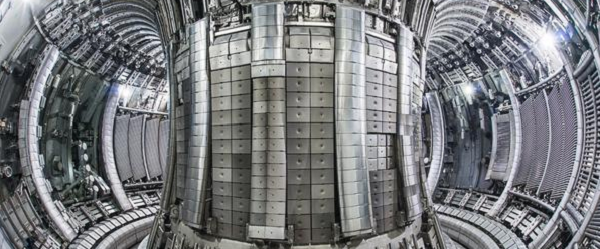The group from Bologna has been awarded projects worth 18 million euro between Italy, France, and Japan – Orders increasing by 40% in two years.
The Aretè & Cocchi Technology group from Bologna is preparing to write an important part of the world’s energy future, having been awarded two highly scientific and technological projects for fusion reactors, in preparation for clean energy production: one with DTT at the Enea Research Centre in Frascati and the other with the European domestic agency F4E (Fusion for Energy) in Japan. At the same time, it is installing the first power supply units in Cadarache, France in order to “switch on” ITER, the biggest tokamak in the world, bringing its plasma to 150 million °C, the temperature of the stars.
These are 18-million-euro projects starring two companies from A&CT’s Science+ division: Ocem Power Electronics from Bologna and Ampegon from Switzerland. Ocem just signed a contract for nearly 8 million euro to design, manufacture, and install the electronic systems (FDU, Fast Discharge Units) that protect the main magnets of the new DTT fusion reactor under construction at the Enea Research Centre in Frascati, where they will test avantgarde solutions to manage heat flows equal to those on the surface of the sun. Ocem and Ampegon will now also begin working in Japan to provide technical assistance and know-how for the fusion reactor in Naka (the JT-60SA tokamak) and the accelerator in Rokkasho (LIPAc-IFMIF). Two contracts collectively worth 5 million euro, which will lead A&CT to personally follow the management and development of crucial structures to study magnetic plasma confinement dynamics and to test materials able to withstand the extremely high strain that defines fusion. Finally, the Swiss company Ampegon from Baden, acquired in 2019 by Gino Cocchi’s industrial holding company, is starting the last step worth nearly 5 million euro (within a 15.5-million-euro project signed with ITER nine years ago), which involves installing and commissioning 8 high-voltage power supply systems for 16 gyrotrons, extremely powerful plasma heating systems, in Cadarache.
«At such a difficult time for markets and, even more so, for our country, facing an energy emergency that is bringing the economy to its knees, we are continuing to invest over 10% of our revenue in projects for innovation, research, and development that look forward to a clean, sustainable future for everyone – explains Gino Cocchi -. For a small industrial group like ours, this is a source of great satisfaction, and I must thank all my collaborators for having won such important international tenders in a complex, trailblazing sector like fusion, which requires not only extremely high competence and professionality but also versatility and flexibility, which is where we beat our competitors».
After the pandemic-induced hiatus, the A&CT group has begun to grow and hire young people once more. «Covid forced our activities to a screeching halt – the president continues – but this year we already have orders worth nearly 180 million euro on a consolidated level, despite the 20 million euro worth of contracts cancelled in Russia and Ukraine. And we aim to reach like-for-like 200 million euro in 2023, amounting to a 40% increase in two years and doubling the figures from 2020». Fuelling the group’s development is also a recruitment plan that expects to add 50 new entries to the existing workforce of 500 collaborators.
FUSION
In thermonuclear fusion reaction, which powers the sun and stars, two light nuclei combine to form a single heavier nucleus and release energy. The subatomic particles that make up plasma (protons and neutrons) must collide, while normally they repel each other because they have the same electrical charge. To overcome the electrostatic repulsion, they must be brought to extremely high temperatures: thermal agitation favours their attraction. Hydrogen isotopes, which are endlessly available everywhere, are used as “fuel” in reactors, and are heated to 150 million °C. The fusion reaction generates helium, an inert non-radioactive gas. Extremely powerful magnetic fields keep the plasma away from the reactor walls, which would not be able to withstand direct contact (confinement), while the generated heat is transformed into electrical energy via a conventional steam generator, turbines, and alternators. One gram of fuel mixture generates approximately 25 MWh of electricity, the equivalent of burning 8 tonnes of oil or 11 tonnes of coal. Fusion is safe and controllable, it does not produce CO2 or other greenhouse gases, nor does it generate radioactive slag or waste.
ITER
A scientific, technological, and industrial challenge involving 35 nations (Europe including Switzerland and the UK, the USA, China, Russia, Japan, India, South Korea) to build the most complex, powerful fusion “machine” to date in Cadarache, in the south of France: a tokamak (a Russian acronym for “toroidal chamber with magnetic coils”) with a plasma chamber ten times the volume of the largest machine in operation today. ITER will be the first fusion reactor to generate more energy than it absorbs. The goal is to produce 500 MW starting from 50 MW input power (the current world record is held by the European JET tokamak, which, in 1997, produced 16 MW from 24 MW of thermal power input, therefore, in deficit).
PRESS RELEASE – Bologna, 14 September 2022
